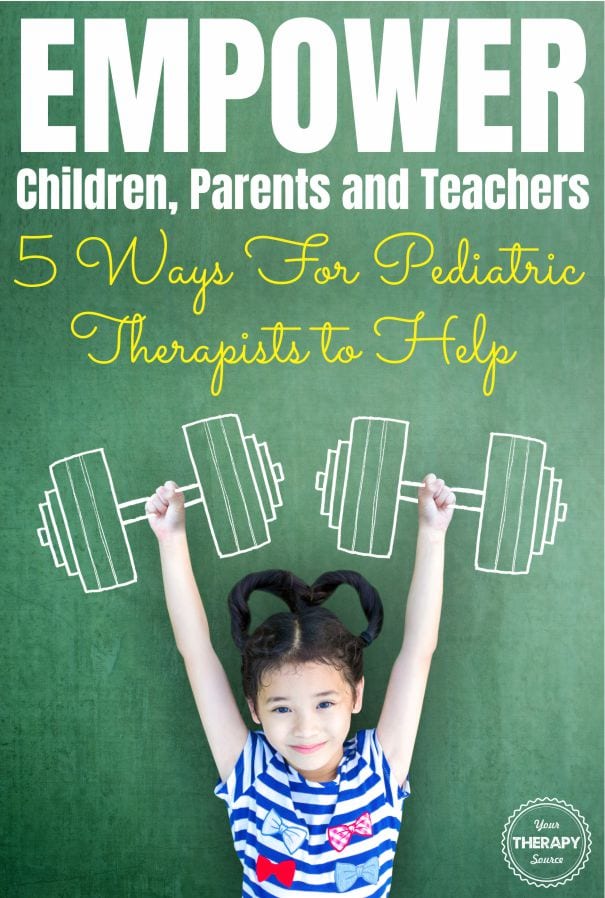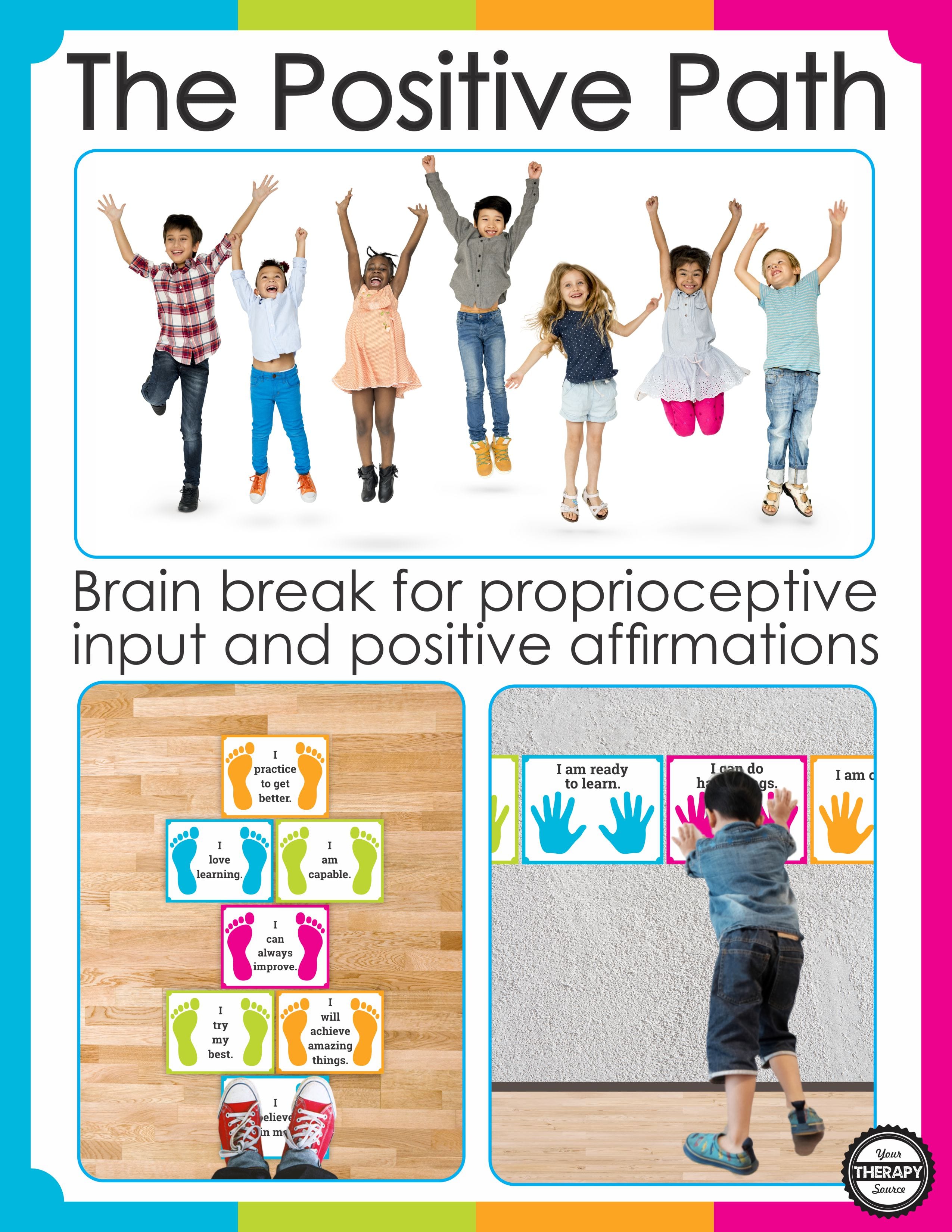Empower Children, Parents and Teachers – 5 Ways For Pediatric Therapists to Help

Pediatric therapists can help to empower children, parents and teachers. In fact, encouraging children and families to work on independence is an underlying goal for all children. Essentially, when we empower children and their support systems to use information and communication we can help kids to reach new goals!
Research in Developmental Disabilities published research on the experiences and needs of parents of young children (aged 2-4 years) with cerebral palsy (CP) regarding their child’s physical and occupational therapy process in a rehabilitation setting. The results indicated that service providers should continually adapt their role to parents’ needs of information, communication and partnership, and they should support and facilitate parents in becoming empowered.
5 Suggestions to Empower Children
Since the ultimate goal of all therapy is independence which requires carry over of therapeutic interventions it is essential that pediatric occupational and physical therapists learn how to empower children, parents and teachers.
Explain
Our primary job as therapists should be to explain why you are doing a certain activity, why you are working on a certain goal or why you need to modify the environment. If someone knows why they are doing something it certainly makes it easier to remember to carry out. For some children, it can be very helpful to explain what you are going to do before you do it. This is one of the easiest way to empower children, teachers, and parents. Check out the What? Why? How? series for simple handouts to help explain therapeutic activities.
Teach
Once you explain why you are doing something, make sure you teach the child, parent or teacher how to do the same at home or in the classroom. Offer suggestions on how the same activities can be carried out in different settings ie Therapeutic Activities for Home and School.
Answer questions
Make sure you tell all team members to ask questions if they have them and that no question is too basic. Everyone learns from each other.
Communicate
Keep lines of communication open so that questions can be answered. Make sure you listen to all team members. They are with the child so many more hours in a day than us. First and foremost, listen to the child. It can be hard to communicate with all team members during a busy day. Try School and Home Communication Forms.
Work Together to Empower Children and Their Families
Encourage students, parents and teachers to be involved as possible in reaching the therapy goals. Provide opportunities for children and parents to work together on activities. Encourage parents and teachers to advocate for younger children. Help older children to advocate for themselves.
Try Positive Affirmations to Empower Children
Positive affirmations for children (and mantras) are terrific tools to teach to support students. They help them develop a healthy sense of self as well as a positive mental-social-emotional mindset.
Affirmations are short; positive “I am” statements that call you into an intentional way of being. They should be accompanied by a visual image and inspire visceral sensations. When you use an affirmation, you should experience yourself as you are declaring.
You can read more about teaching positive affirmations to children here.
Support student strengths in the classroom by combining positive affirmations for kids and proprioceptive input with The Positive Path. Children can jump along the path or do wall push-ups while they read words of encouragement. Students can benefit from proprioceptive input to help get their bodies ready to learn.
Reference: Kruijsen-Terpstra AJ et al. Parents’ experiences and needs regarding physical and occupational therapy for their young children with cerebral palsy. Res Dev Disabil. 2016 Mar 10;53-54:314-322. doi: 10.1016/j.ridd.2016.02.012. [Epub ahead of print]





Comments are closed.